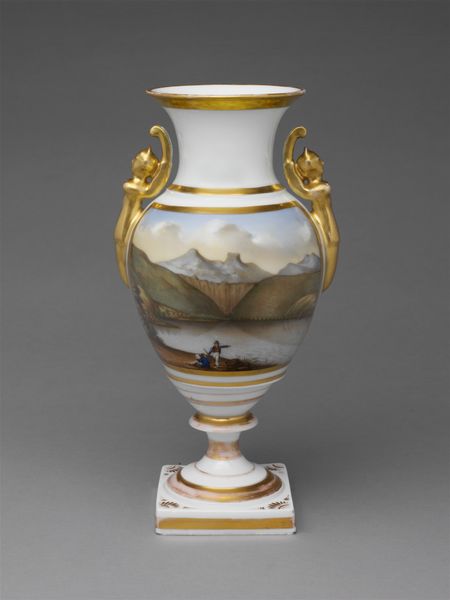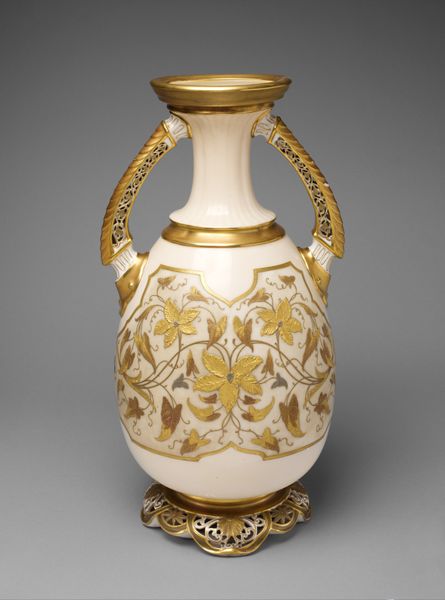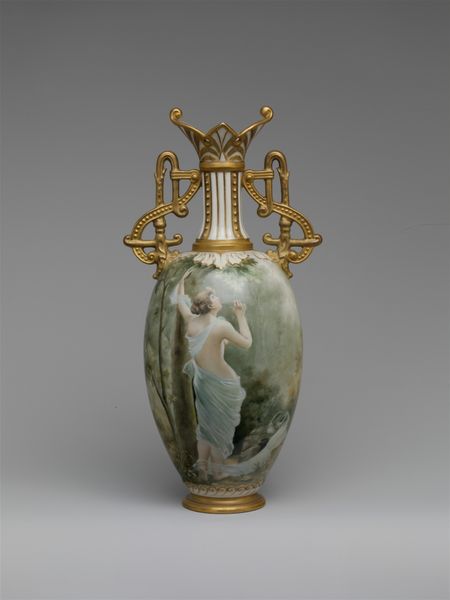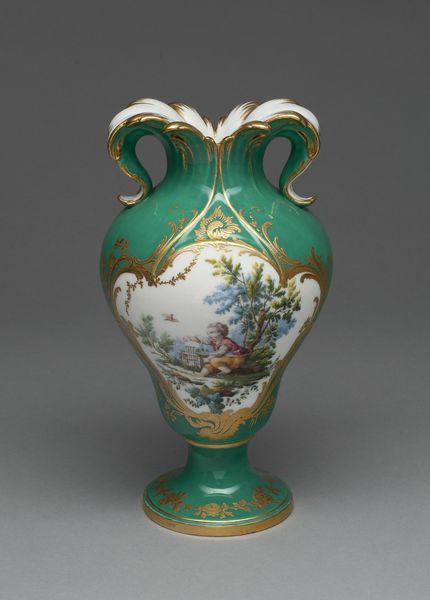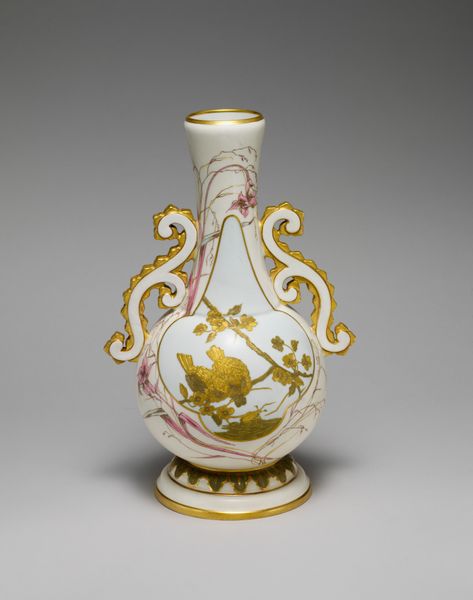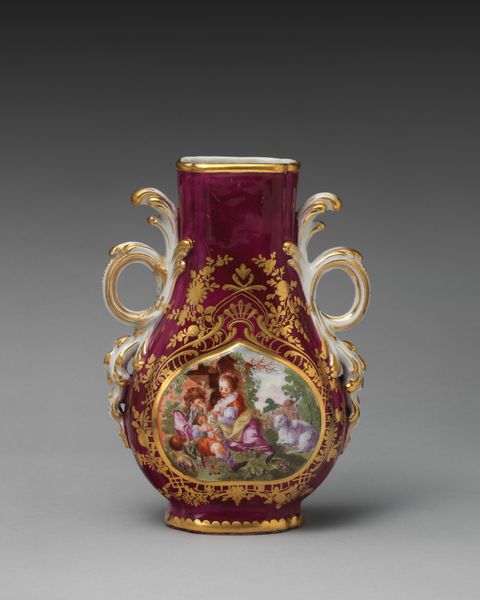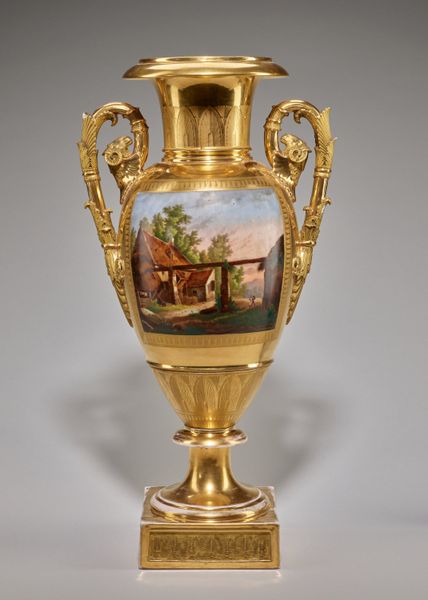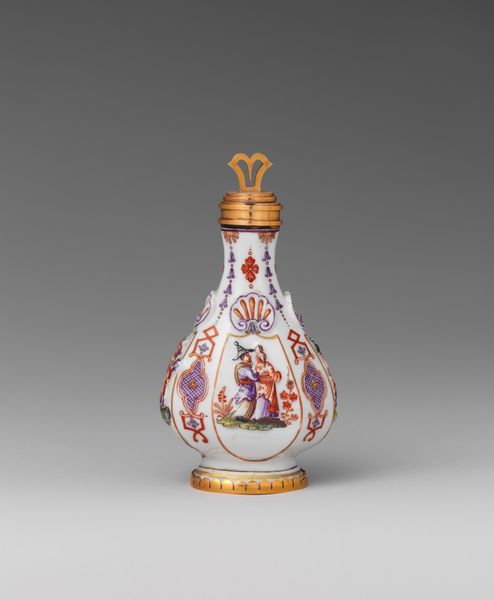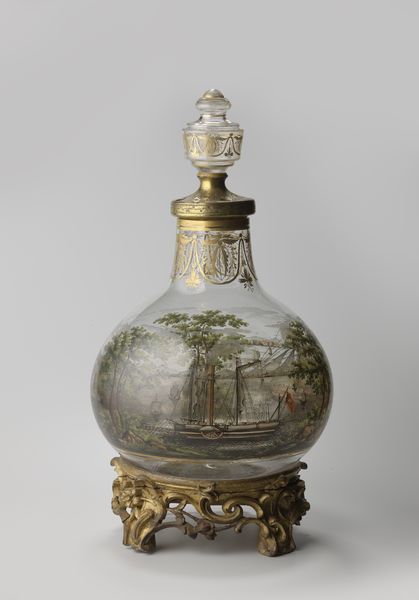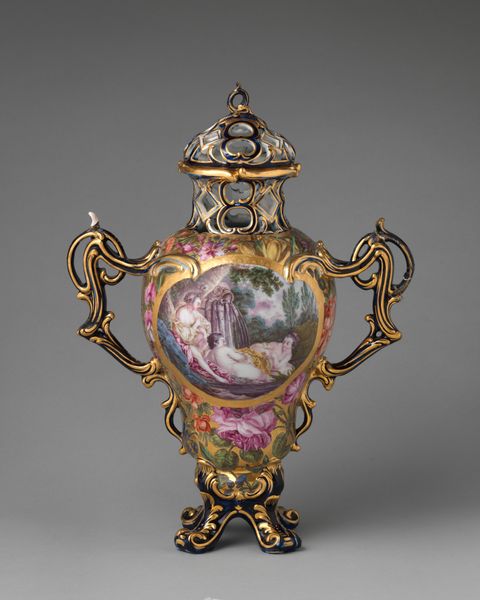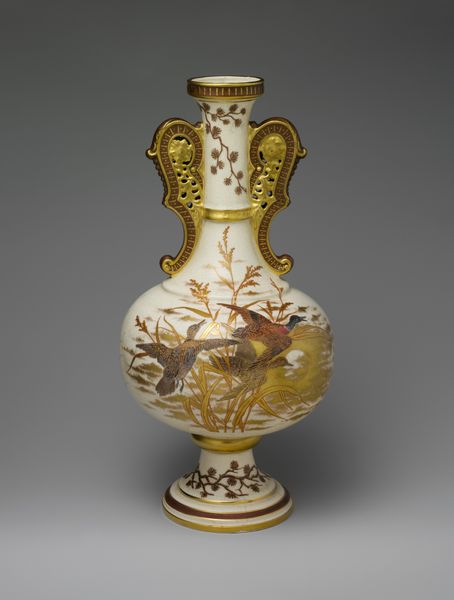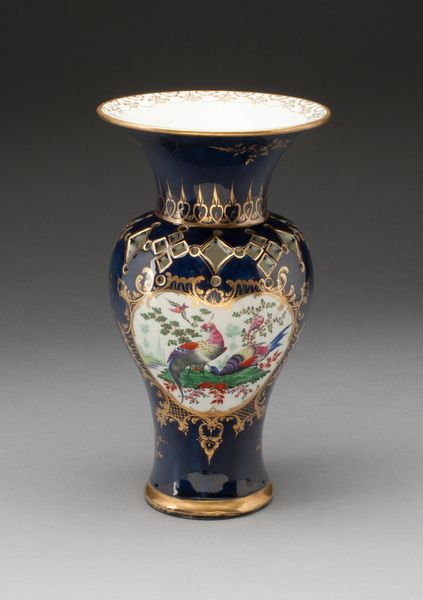
painting, ceramic, porcelain
#
narrative-art
#
painting
#
landscape
#
ceramic
#
porcelain
#
figuration
#
stoneware
#
orientalism
#
ceramic
#
genre-painting
#
decorative-art
Dimensions: 22 3/8 × 56 11/16 in. (56.8 × 144 cm)
Copyright: Public Domain
Curator: Let's turn our attention to this exquisite piece, a covered vase created by the Willets Manufacturing Company, circa 1895 to 1905. It resides here at The Metropolitan Museum of Art. Editor: Oh wow, what a trip! It's giving me serious 'fantasy historical drama' vibes. The delicate porcelain with that hand-painted scene...it feels so ornate yet whimsical, like something out of a dream I had after binge-watching a period piece. Curator: The vase embodies the artistic and cultural trends of its time, particularly the fascination with "Orientalism" and "Narrative Art." It attempts to convey a story. It offers a window into the tastes and aspirations of its wealthy patrons. Editor: I see a woman in a canoe in the middle of a painted sea. There are buildings behind her that remind me of some old engraving that my grandfather would always keep. It feels both serene and staged. There’s something slightly unsettling, almost theatrical about her stance… as if she's acting as an Indian princess. It has this dreamy and theatrical quality at the same time. I see that "narrative art" is in full force, yeah? Curator: Indeed. Willets was known for its decorative arts, and this vase exemplifies their expertise in porcelain and painting. They frequently borrowed styles and techniques popular at the time, including decorative schemes and historical interpretations. They appealed to popular notions about Indigenous peoples in this piece. Editor: Absolutely, it’s that tension that really grabs me! Is it meant to romanticize, or… appropriate? The gold detailing juxtaposed with the faux primitive scene makes for an interesting power play—it's hard to tell. Are we celebrating or patronizing this idealized past? This is the kind of historical object you would find displayed behind glass in a museum. Curator: This tension speaks to the complexities of the Gilded Age, reflecting a time of industrial growth coupled with idealizations of the past. The vase isn't merely decorative; it embodies those complex socio-political ideas and questions. Editor: Agreed! Seeing this vase, I'm left with so many swirling feelings about progress and authenticity, and the stories we tell about ourselves through objects. What about you? Curator: For me, it reinforces how decorative arts can offer us complex portraits of their own historical contexts. It can show both material aspiration and historical imagination. It helps us think about how museums came to collect and curate artifacts, often laden with cultural assumptions that needed to be examined.
Comments
No comments
Be the first to comment and join the conversation on the ultimate creative platform.
